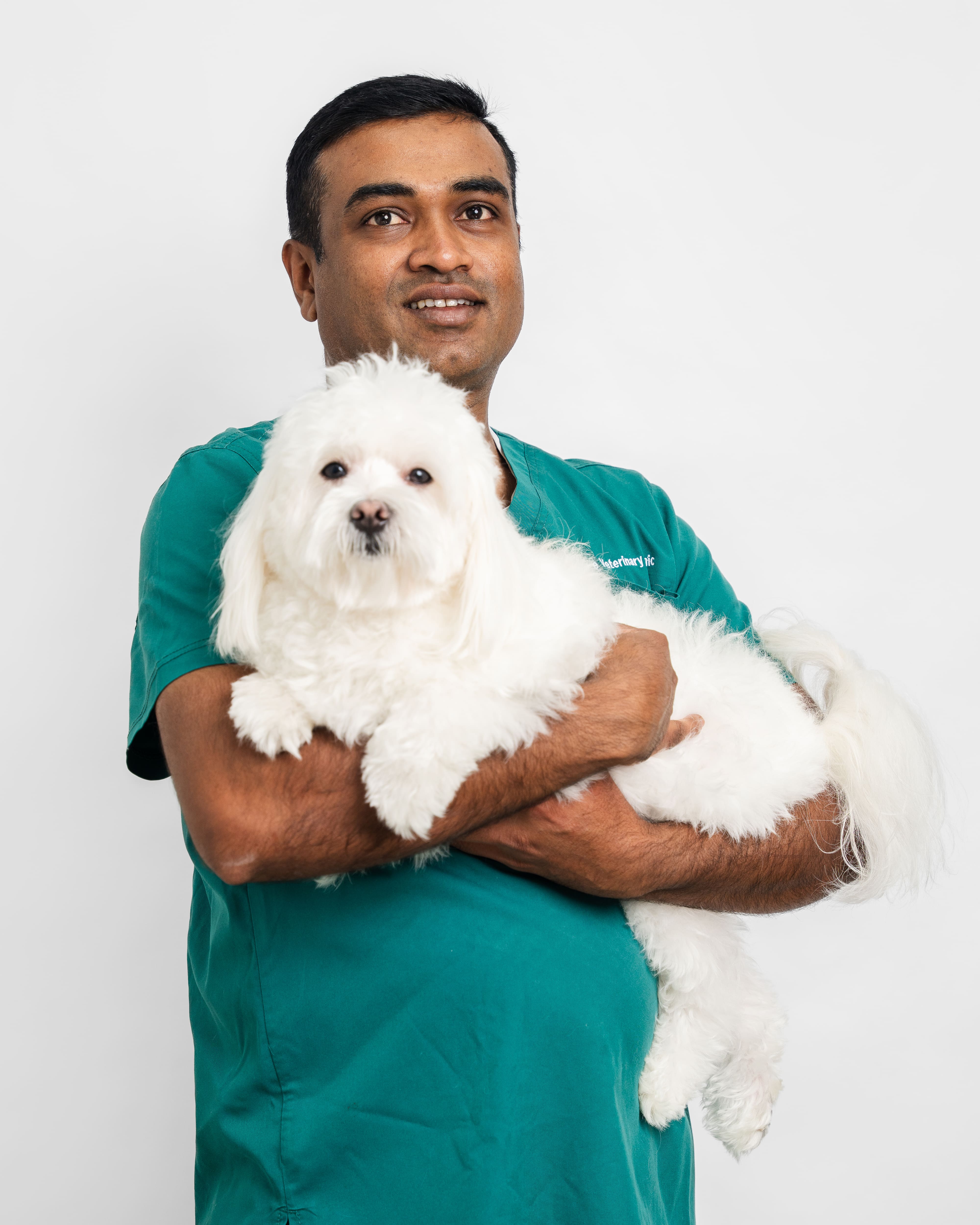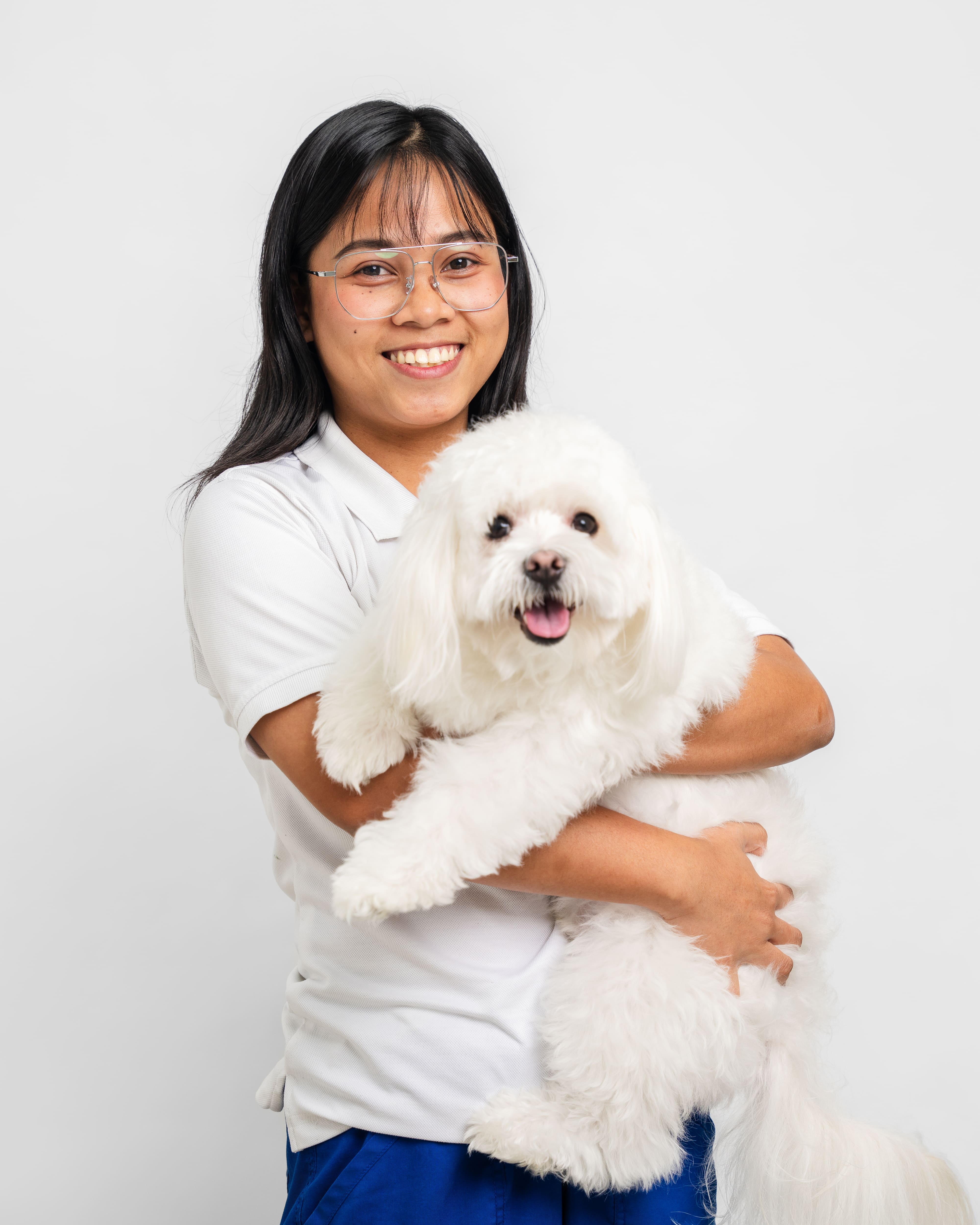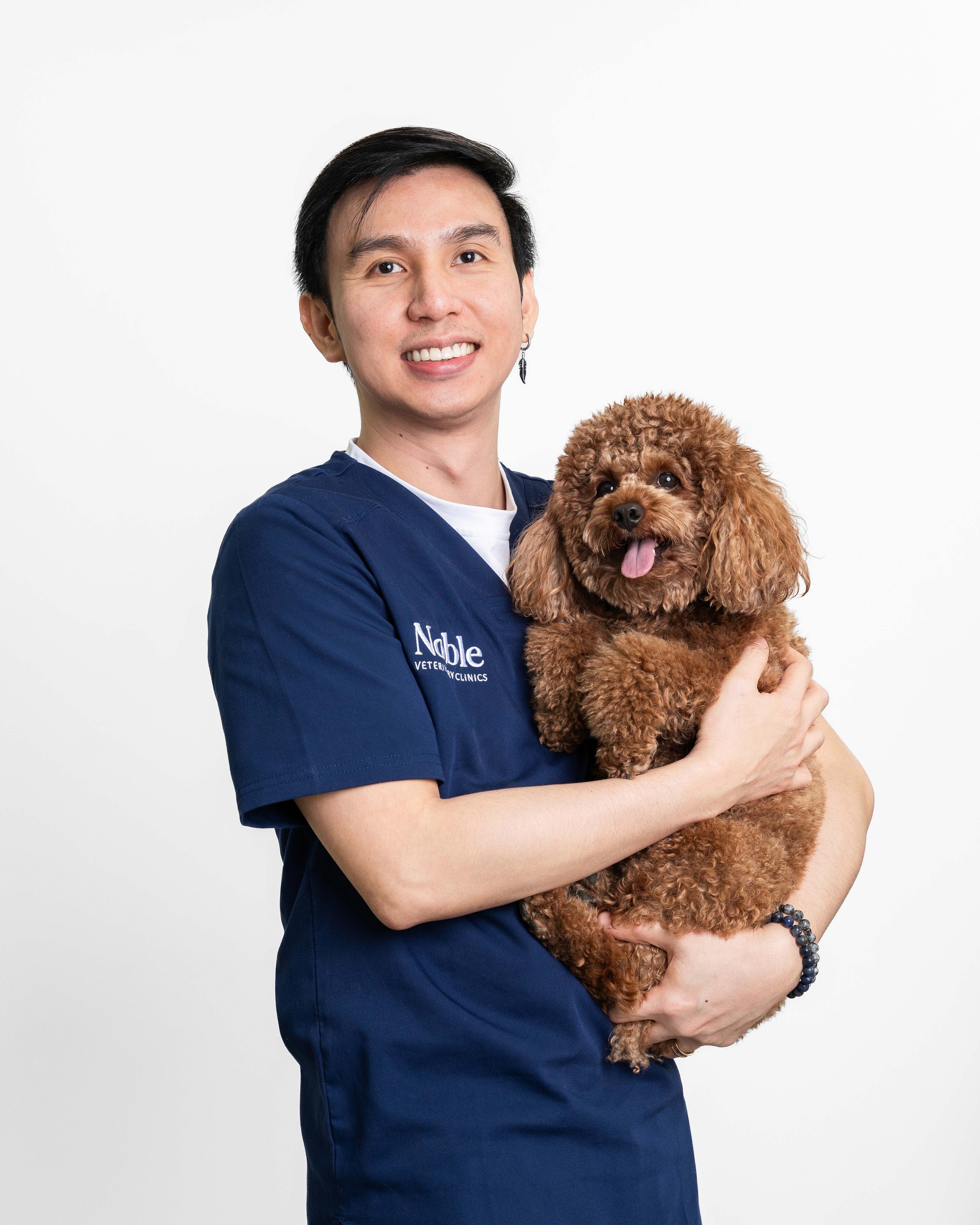12 فبراير 2025
If you’re a dog owner, you always want to keep your best friend protected at all times. But sometimes, invisible threats like parasites can cause unexpected health issues. One such parasite is Giardia, a microscopic organism that can infect your dog's intestines, leading to unpleasant digestive problems.
Giardia in dogs is more common than you might think. While it’s not always serious, it can cause extreme discomfort and even lead to dehydration and weight loss if care is not administered. Knowing how Giardia spreads in dogs, recognizing the symptoms, and learning about how to prevent it are essential for pup health.
But before that, let’s talk more about Giardia in dogs.
What is Giardia in Dogs?
Giardia is a microscopic protozoan that infects a dog’s intestines, causing a condition known as giardiasis. Unlike worms, which are larger and often visible in a dog's stool, Giardia is too small to see without a microscope.
This parasite exists in two forms:
Trophozoites. These live in the intestines and feed on nutrients, multiplying rapidly.
Cysts. These are the infectious trophozoites that get shed in the dog's feces and can survive in the environment for weeks to months.
Dogs contract Giardia by ingesting these cysts from contaminated water, food, soil, or feces. Once inside the body, the cysts develop into trophozoites, attach to the intestinal walls, and start reproducing, leading to digestive issues.
Dogs contract Giardia when they ingest cysts from contaminated sources, including:
Water. Drinking from puddles, ponds, lakes, or streams that contain Giardia.
Soil. Sniffing, licking, or eating dirt that has been contaminated with infected feces.
Feces. Direct contact with infected dog feces or contaminated surfaces like kennel floors.
Food and Bowls. Eating food or drinking water that has been exposed to Giardia cysts.
Giardia is a widespread parasite and can affect dogs of all ages, but puppies, senior dogs, and those with weaker immune systems are more vulnerable. Dogs that spend time in shelters, kennels, dog parks, or areas with poor sanitation are at a higher risk of exposure.
Symptoms of Giardia in Dogs
Giardia infections in dogs can be tricky to detect because symptoms vary widely. Some dogs remain completely asymptomatic, while others suffer from persistent digestive issues.
Here are the common symptoms of Giardia in dogs:
Diarrhea. This symptom is the most common symptom of Giardia in dogs. Canine diarrhea from Giardia often has a soft, watery, or greasy consistency and may contain mucus, giving it a slimy appearance. The stool may also have an unusually strong, foul odor. Diarrhea can be intermittent or chronic.
Weight Loss. Because Giardia interferes with nutrient absorption, infected dogs may experience gradual weight loss despite eating normally. This is especially concerning in puppies, as they need proper nutrition for growth and development.
Vomiting. Some dogs with Giardia may experience occasional vomiting, though this is less common than diarrhea. When it does occur, it may be accompanied by nausea, lip-smacking, or drooling.
Dehydration. Frequent diarrhea can almost always lead to dehydration, particularly in puppies, old dogs, or dogs with weaker immune systems. The common indicators of dehydration include dry gums, excessive panting, and loss of skin elasticity.
Lethargy. Dogs infected with Giardia may become less active and more tired than usual. Lethargy can be caused by dehydration, nutrient loss, or the body's immune response to the Giardia infection.
Abdominal Discomfort. Some dogs may exhibit signs of stomach pain or discomfort, such as whining, restlessness, or a hunched posture. In severe cases, bloating and gas may also be present.
Poor Coat Quality. Over time, chronic Giardia infections can lead to a dull, rough, or thinning coat due to malnutrition and poor overall health.
How is Giardia in Dogs Diagnosed?
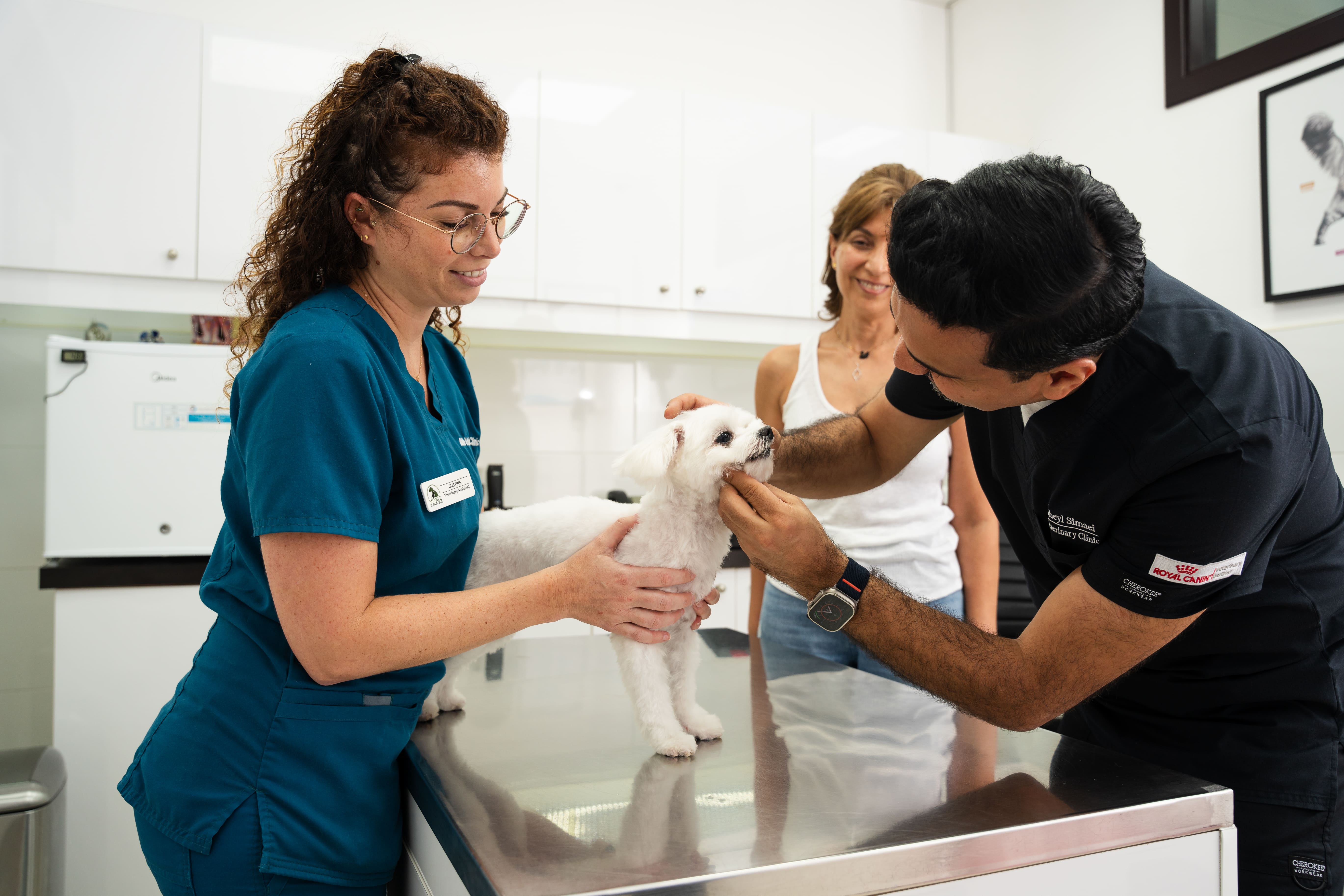
Because the symptoms of Giardia in dogs can resemble other digestive issues, a proper veterinary diagnosis is essential. Giardia is not always easy to detect, as the parasite’s cysts are shed intermittently, meaning they may not always be present in a single stool sample. This makes testing a bit more challenging.
But first, we’ll start with a physical examination and medical history. We’ll also ask you questions about any symptoms your dog has experienced and its activity at home.
To confirm Giardia in your dog, we’ll use these diagnostic tests:
Antigen Test. This is a sensitive test that detects Giardia proteins rather than relying on the presence of cysts.
Direct Smear. A small sample of fresh stool is put on a slide and examined under a microscope for Giardia. This test works best with very fresh samples but is not always conclusive.
Fecal Flotation Test. A standard fecal examination involves mixing a stool sample with a solution that helps separate parasite cysts. The sample is then examined under a microscope. However, since Giardia cysts are not always present in every sample, a single test may miss an infection.
PCR Testing. These tests can detect Giardia DNA in a stool sample. This is one of the most accurate ways to confirm an infection but is less commonly used due to its higher cost.
Treatment for Giardia in Dogs
Once Giardia is diagnosed in your dog, we will prescribe a treatment plan to remove the parasite and manage the existing symptoms. Treatment typically involves antiparasitic medications, supportive care, and environmental sanitation to prevent reinfection.
Medications for Giardia
For medications, vets typically recommend two options: fenbendazole and metronidazole. Fenbendazole is one of the most commonly prescribed medications for Giardia in dogs. It is generally well-tolerated and is often the first-choice treatment, especially for puppies.
Metronidazole is another common medication used to treat Giardia. However, some Giardia strains have shown resistance to metronidazole, which is why vets may prefer fenbendazole or use both medications together.
Supportive Care and Management
Because Giardia causes diarrhea and other symptoms, managing these conditions with supportive care techniques and home adjustments will be a focus.
Hydration. Dogs with severe diarrhea may need extra fluids to prevent dehydration. In mild cases, ensuring access to fresh water is enough, but severely dehydrated dogs may require IV fluids from the clinic.
Digestive Support. A bland diet with no additives. It may help soothe the digestive system. Probiotics for dogs can also support gut health and restore beneficial bacteria.
Home Cleaning. Wash bedding, bowls, toys, and other things that belong to your dog with hot water and pet-safe disinfectants. Make sure to sanitize the house and bathe your dog regularly, especially at the rear end.
How to Prevent Giardia in Dogs?
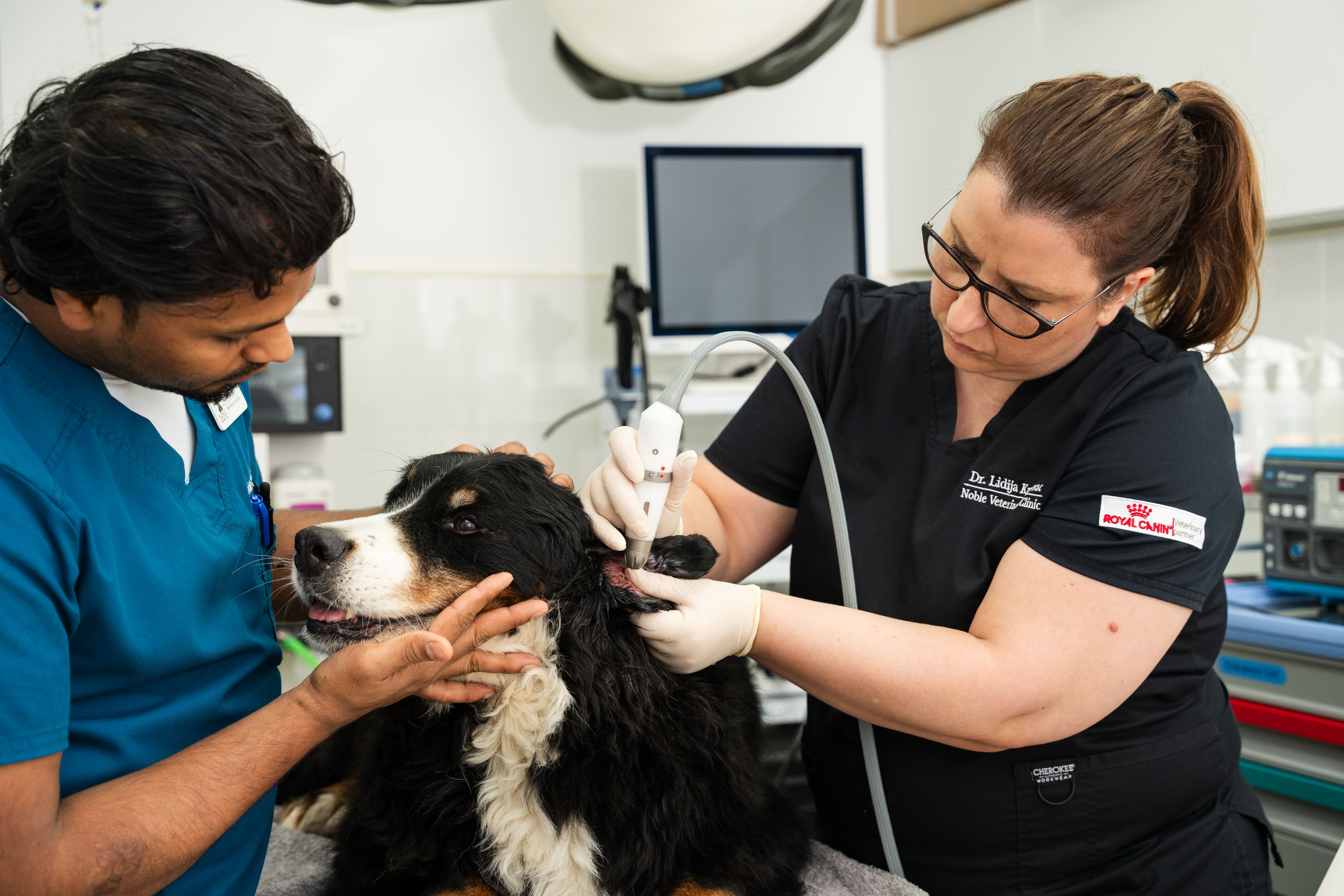
Preventing Giardia in dogs is all about reducing exposure to contaminated water, food, and environments. Since the parasite spreads easily, good hygiene and regular vet checkups are key.
Here’s how you can keep your dog safe from Giardia:
Provide Clean Drinking Water. Always give your dog access to clean water. Avoid letting them drink from puddles, lakes, streams, or any standing water, as these are common sources of Giardia.
Maintain Good Hygiene. Picking up and disposing of feces immediately helps prevent Giardia from spreading in shared spaces. Clean your dog’s bowls daily with hot water and pet-safe disinfectants. Bathe your dog regularly as well. You can also have them professionally groomed.
Keep Living Areas Clean. Regularly wash your dog’s beds, toys, and crates with hot water and pet-safe disinfectants to reduce the chance of Giardia lingering in the environment.
Be Cautious in High-Risk Areas. Dog parks, kennels, and shelters are common places where Giardia spreads. If your dog spends time in these environments, keep an eye out for symptoms and limit contact with dogs showing signs of illness.
Regular Checkups. Routine vet visits and fecal tests can help catch Giardia infections early, especially in puppies or dogs living with other dogs at home.
A healthy dog starts with a strong gut, and as owners, it's our job to protect them from the unseen threats that can disrupt their well-being.
- Dr. Sarabjit Singh
Conclusion
Fortunately, Giardia can be managed and treated. It just takes immediate action and care. Since Giardia spreads easily, proper cleaning and hygiene are just as important as medication to prevent reinfection.
The best way to protect your dog from Giardia is through prevention. Keep them clean and groomed regularly while also keeping the home sanitized. Make sure you give your dog plenty of water and a good diet. With these tips, you can help your dog stay Giardia-free.
Subscribe to Our
Newsletter
Sign up for weekly pet health tips and insights from our veterinarians.
